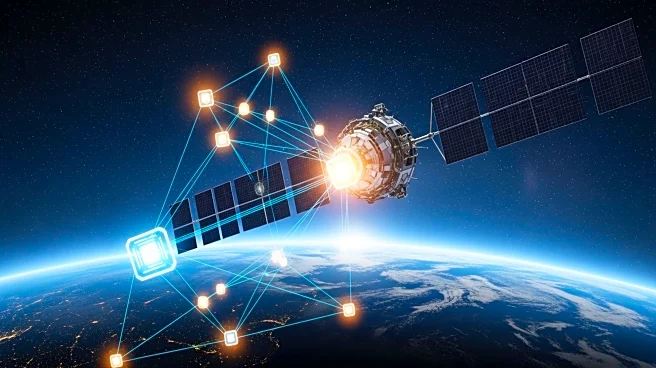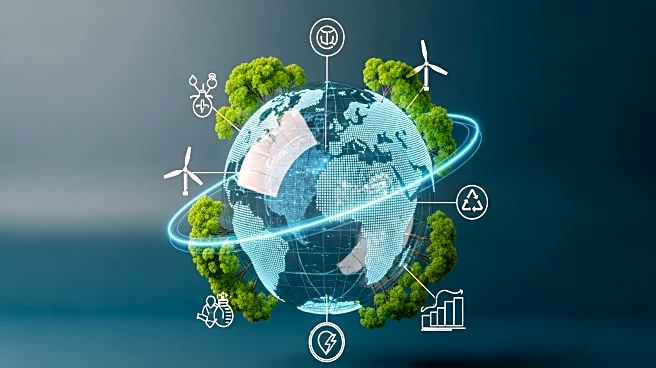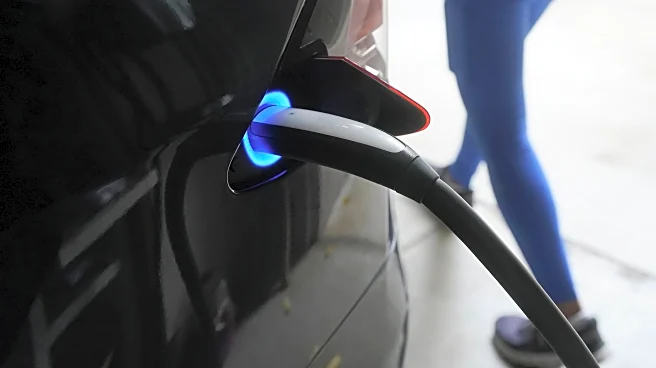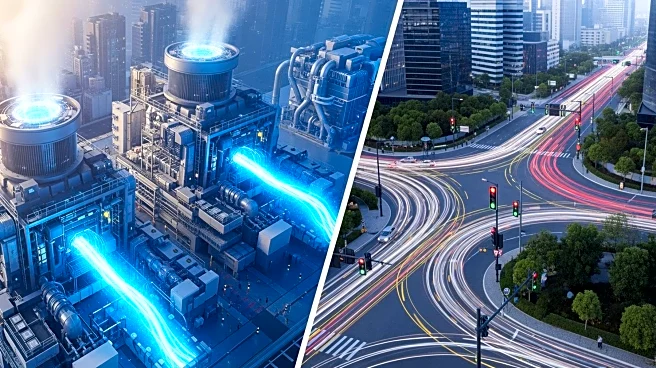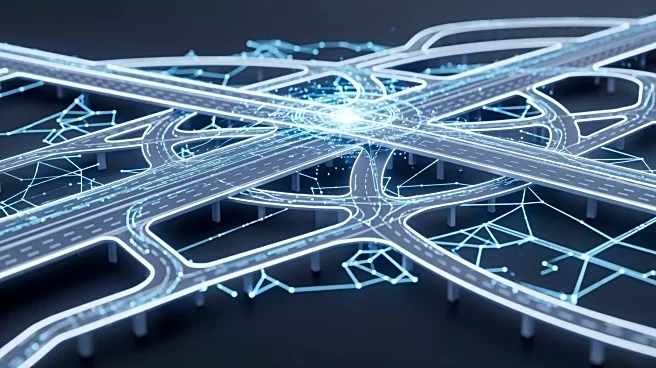What's Happening?
Artificial intelligence (AI) is increasingly being scrutinized for its significant energy consumption, with data centers accounting for about 1.5% of global electricity use. This figure is expected to more than double by 2030, potentially exacerbating
fossil fuel consumption and greenhouse gas emissions. However, AI is also being leveraged to enhance energy efficiency and reduce pollution. Applications include optimizing building energy use, scheduling electric vehicle charging during off-peak times, and reducing methane emissions in oil and gas operations. AI-driven solutions are also being used to identify geothermal energy sources and improve traffic flow to cut emissions.
Why It's Important?
The dual role of AI in both consuming and conserving energy presents a complex challenge. On one hand, the growing energy demands of AI could contribute to environmental degradation. On the other, AI's potential to optimize energy use and reduce emissions offers a pathway to mitigate its own environmental impact. This balance is crucial for industries and policymakers aiming to harness AI's benefits while minimizing its ecological footprint. The ability of AI to improve energy efficiency in buildings, transportation, and industrial processes could lead to significant reductions in greenhouse gas emissions, benefiting both the environment and economic stakeholders.
What's Next?
As AI technology continues to evolve, its applications in energy efficiency are likely to expand. Future developments may include more sophisticated AI models for predicting and managing energy use across various sectors. Policymakers and industry leaders will need to address the energy demands of AI infrastructure while promoting its use in sustainable practices. The ongoing research and pilot programs, such as those in California and Boston, could serve as models for broader implementation. Stakeholders will need to collaborate to ensure that AI's growth aligns with environmental goals.
Beyond the Headlines
The ethical implications of AI's energy consumption versus its environmental benefits are significant. As AI becomes more integrated into daily life, the need for sustainable practices in its development and deployment will become more pressing. The potential for AI to drive significant environmental improvements must be weighed against its resource demands, prompting discussions on regulatory frameworks and industry standards. Long-term, AI could play a pivotal role in transitioning to a more sustainable energy landscape, but this will require careful management and innovation.


